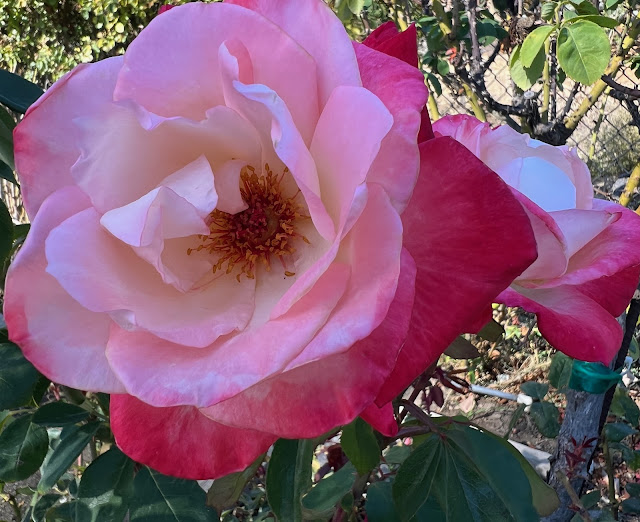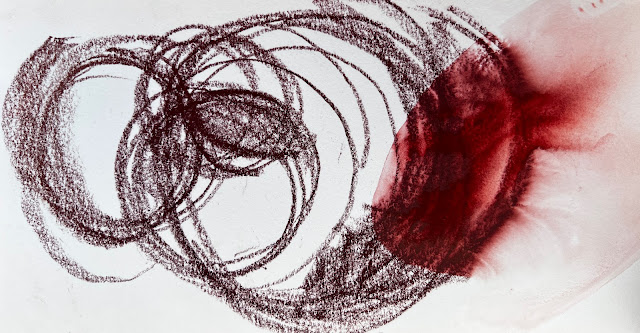 |
| Window View July 2025 |
A hundred years. A century of life. My grandparents and parents were alive in 1925. They had already witnessed the spreading of electricity, indoor plumbing, the telephone, and motorcars, as they were called at that time. One hundred years ago, the world had survived the First World War and the 1918 influenza. Virginia Woolf's Mrs. Dalloway, Franz Kafka's The Trial, and F. Scott Fitzgerald's The Great Gatsby were all published in 1925. All three books remain on Literature reading lists, and their themes are as pertinent today as they were when they were first published. Fitzgerald memorialized the idea of how great wealth and prestige can corrupt and decay morals and social values. The Trial showed us that an individual can become powerless against an overreaching form of government. Mrs. Dalloway's themes revolve around the passage of time and the effects of WWI, especially on class structure and privacy. These ideas are so familiar today.
One hundred years ago, the Jazz Age and Paris were filled with creative people such as Ernest Hemingway, Henry Miller, Picasso, Man Ray, and Josephine Baker. New fashion design created freedom of movement for women. Coco Chanel promoted the flapper dress with its tube-like shape and shortened hemlines, and hair cut into a "Bob." The right to vote was extended to women in the United States. Jazz became the music that represented these forms of rebellion against norms.
.jpeg)
Fify-one years ago, the Beatles arrived at JFK Airport after their song, "I Want to Hold Your Hand," went to #1 on USA charts and helped to create another music rebellion. While traveling around the US, Paul McCartney took photos of all the people who came out to see the Beatles. A large collection of his photos, along with several videos from TV appearances, can be seen this summer at San Francisco's deYoung Museum. Amidst all the frenzy that surrounded the group, McCartney stepped back and took pictures of crowds waiting on roofs, on streets, and at airports. We wondered if anyone in recent years has created such a fan frenzy, and thought of Taylor Swift, who has created a devoted fan base through her music.
The Beatles' music outlasted the group. Their early music is catchy and easy to sing along with, and it played as the background to my own early adulthood. Along with groups like the Doors and the Righteous Brothers, Beatles' music rang out at every college dance. We still hear their music in public places, and children have grown up listening to them, too. Yesterday, as I walked through a shopping mall, I was surprised to hear "Help" over the speakers.
.jpeg)
A friend, who is organizing music shows at the Winters Opera House, invited us to a performance by the Sun Kings, a Beatles tribute band that has been playing together for 25 years. Winters is off the main highways, between the Bay Area and Sacramento. Bill and I had never been in Winters before, so we were curious why we had missed it. As we headed east, we drove across the Bay Bridge to the Carquinez Straits to Highway 80, a road we traveled often in earlier decades to go skiing in the Sierra Nevada Mountains. At that time, Highway 80 was a country road that cut through fields of produce, and almond and walnut groves. Fruit stands dotted the highway, and an occasional way station, such as the Nut Tree, offered a place to stop on our way to the Sierras. Now, until we reached the Nut Tree, shopping malls lined the road, though large swathes of farmland can still be seen behind the buildings.
After we passed the Nut Tree, we took Highway 505 to Winters, a small town where everyone seems to know each other. 2025 is Winters' sesquicentennial year (150) and the town is still flourishing. The main street is only a couple of blocks long and lined with old, stately brick buildings, attesting to the town's prosperity in the previous century as a hub for railroads and agriculture. The railroad no longer stops in Winters, but agriculture is still a big business in the area, and several large corporations near Winters provide other jobs. Three lively restaurants in the center of town occupy some of the brick buildings: the Preserve, whose owner sponsors the music shows, the Buckhorn Steakhouse, and the Putah Creek Cafe, which has a line out the door on weekends for breakfast. The Hotel Winters has been beautifully refurbished and is across an alleyway from the Opera House, where the Sun Kings performed.
.jpeg)
That evening, the hall quickly filled with ticket-holders, most of whom had been around in 1964 when the Beatles performed on the Ed Sullivan Show during their first tour of the U.S. We heard a few screams when the band started playing, "I Want to Hold Your Hand." During the first half of the performance, we listened to the merry, light-hearted music that the Beatles played in their early days. The whole room moved with the music, singing along to every word just as we all did in 1964. After the intermission, the Sun Kings moved on to play the Beatles' more sophisticated, intricate music and ended with John Lennon's ballad, "Imagine." Those songs from the earliest to the later years moved us through a decade of turbulence as we witnessed the Vietnam War and Watergate. The later songs reminded us of the effect of those events on the world, how that music helped to carry us through those turbulent times, and how much we have changed since then. After a week, I am still humming "Can't Buy Me Love."
 |
| All Americans' Day |
Check out Litcharts for more information about these three great books:
https://www.litcharts.com
or 1920s Fashion:
https://www.wardrobeshop.com/blogs/flapper-era/how-jazz-influenced-fashion-in-the-1920s#:~:text=The%20Age%20of%20Jazz%20in%20Fashion&text=.The%201920s%20saw%20some%20massive%20changes%20taking%20place%20in%20the%20fashion%20industry&text=Some%20significant%20changes%20that%20became%20permanent%20in,make%20moving%20around%20and%20driving%20cars%20easy
Winters as a place to visit:
Stay at the Hotel Winters:
https://www.hotelwinters.com/?utm_source=google&utm_medium=local&utm_campaign=gmb_listing
Try these local restaurants:
https://www.preservewinters.com
https://www.buckhornsteakhouse.com
https://www.putahcreekcafe.com
Interested in music? Check out the Winterslive concert list at
https://www.preservewinters.com/live
.jpeg)






.jpeg)
.jpeg)
.jpeg)

.jpeg)





.jpeg)
.jpeg)


.jpeg)




.jpeg)
.jpeg)
.jpeg)

.jpeg)
.jpeg)
.jpeg)


.jpeg)


.jpeg)


.jpeg)
.jpeg)
.jpeg)
%20(1).jpeg)

.jpeg)
.jpeg)
.jpeg)
.jpeg)
.jpeg)